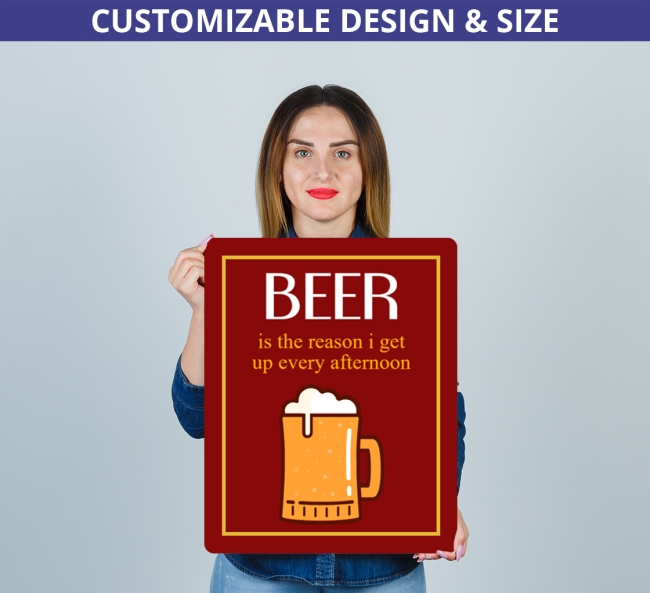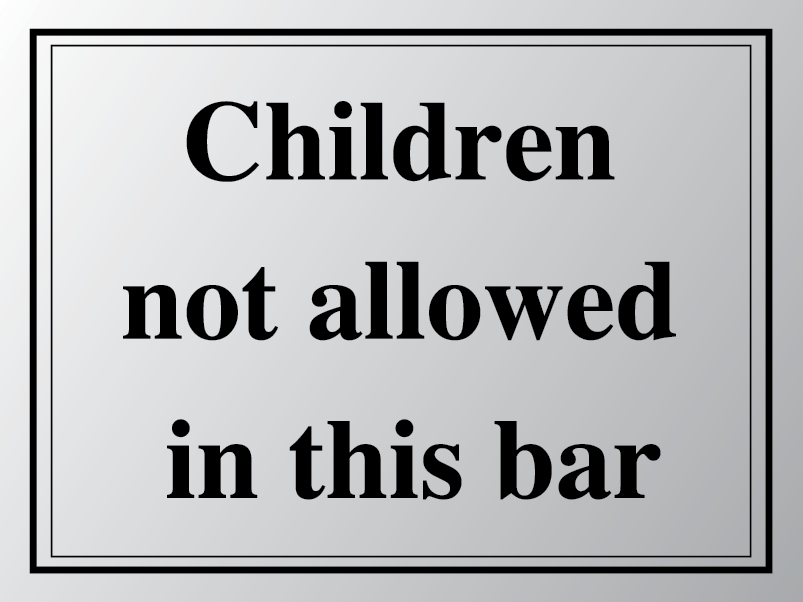Free News On Deciding On Bar Signs
Free News On Deciding On Bar Signs
Blog Article
What Are The Differences Between The Bar Sign And Their Different Uses?
The bar signs are different in their the purpose for which they are used. Bar signs are used for many different functions. Branding
Purpose to establish and reinforce bar's brand image.
The features usually include the bar's logo, its name, and signature colors. The idea behind this feature is to stand out and reflect the bar's general theme.
Custom-made metal signs that include the bar's name or a neon sign that has its logo are two examples.
2. Information
Goal: Inform patrons about the bar.
Features: Clear, easy-to-read text that conveys essential details like hours of operation and Wi-Fi passwords as well as household rules or restroom areas.
Signs pointing out restrooms, or hours of operation on a wall close to the entryway.
3. There are also things to decorate your home on Decorative
Objective: To enhance the visual appeal and ambience of the bar.
The features are usually creative or thematic and are a great addition to the decor of the bar as a whole. There is no need to provide any text or specific information.
Examples include: old advertising for beer, funny signs, or even quirky art.
4. Promotions
The purpose of the campaign is to promote specific products, specials, or other events.
Highlights: Stunning images that highlight special deals or events coming up. Can include temporary elements or changeable ones.
Examples: chalkboards that list daily specials; banners that promote special deals during happy hour and posters to advertise upcoming events.
5. Directional
Scope: To direct patrons inside the bar.
Highlights: Clear arrows or directions to guide customers through the bar area, for instance finding the bathrooms, exits or other locations within the bar.
The signs point out restrooms, "Exit", arrows indicate different seating sections.
6. Regulatory/Compliance
Obligation: Keeping up with legal requirements, and assuring security.
Highlights: Signs required to comply with legal requirements like smoking areas and occupancy limits, as well as emergency exits.
Examples: "No Smoking", occupancy limits and emergency exit signs.
7. Interactive
Purpose : To engage the client and create an engaging experience.
Features: Elements designed to facilitate interaction with patrons like interactive surfaces or write-on surfaces.
Examples: Chalkboards for customer messages, signage with QR codes linking to digital menus or social media.
8. Thematic
The purpose is to create an environment or theme.
Features: Signs aligned with the design of the bar, enhancing the overall ambience.
Examples: Pirate signs in nautical bars and rustic wooden signs in a bar with a country theme.
9. Menu
The goal of this menu is to show the beverages available at the bar.
Features: Lists clearly the food and beverages, often with prices. It may be static or changeable.
Digital screens, for example, with rotating menus and wall-mounted drinks menus.
Each bar sign has specific functions, and it is created to be a part of the bar's surroundings. With this knowledge, bar owners can choose and install signs in a way that will improve the experience of patrons and satisfy operational requirements. Take a look at the most popular get more info for bar signs for website recommendations including personalised cocktail bar sign, pub bar signs for sale, hanging tavern sign, personalised pub signs for sale, home pub signs, personalised garden bar signs, personalised beer sign, personalised pub signs for garden, pub signs personalised, bar sign outdoor and more.
What Is The Difference Between Mounting And Installing Bar Signs?
Bar signs vary in terms of the way they are mounted and installed depending on their style and dimensions, weight, place of installation and the purpose for which they are intended. This article will provide a comprehensive overview of the various mounting and installation methods for bar signs:1. Wall-Mounted signs
Attaching the wall directly.
Methods:
Screws & Anchors: Often used on heavier signs (metal & wood) for stability.
Adhesive strip: For temporary or lighter installations as well as signs (foamboard or acrylic).
Brackets are used to make signs more visible by allowing them protruding out from the wall.
Uses: Indoor decor, menu boards, directional signs.
Advantages: Secure, flexible and allows for a prominent display.
Negatives: Walls can be damaged It is also it is difficult to move.
2. Hanging Signs
Suspended or hung from ceilings.
Methods:
Chains: Sturdy and adjustable perfect for large signs.
Cables: Modern designs usually make use of cables to give them a sleeker appearance.
Rods: Provide a rigid support structure.
Uses: Ceiling decor, directional signs, overhead promotional signs.
Vertical space is highly visible, and the options for decoration are endless.
Disadvantages
3. Freestanding Signs
Specifications Not connected to a structure.
Methods:
A-Frames (foldable and portable) are often employed as an advertisement for sidewalks.
Pedestal Stands: Stable base, ideal for indoor use.
Post and Panels: Usually used for permanent, larger signs.
Uses: Outdoor advertising, indoor directional signs, promotional displays.
Portable, versatile and able to be easily relocated.
Disadvantages : Bulky, needs flooring space.
4. Window Signs
Specifications Attached directly to windows.
Methods:
Suction cups are easy to install and removal, perfect for signs with smaller sizes.
Adhesive Vinyl : It can be used to create decals or graphics.
Static Clings: They are permanent but not permanent. They can be reused and they are easy to put up or take down.
Applications: Promotional messages, and branding.
The window is extremely visible and makes the most of the area available.
Limitations: Can be affected by sunlight, limited by the dimensions of your window.
5. Signs with Edge-Lit or Backlit Lighting
The sign's characteristics include lighting within the sign structure.
Methods:
Wall-mounted electrical connections (Requires secure mounting and electrical hook-ups):
Suspended by Power Cables combines hanging method with integrated light.
Uses: High-visibility branding, menu boards, decorative elements.
Benefits: Better visibility and attractive illumination.
The disadvantages are that installation requires electrical work and is more complicated.
6. Portable and Temporary Signs
Features: Easy to install and take off.
Methods:
Pop-Up stand is lightweight and foldable.
Banner Stands: Roll-up or retractable designs.
Uses: Promotions, events, seasonal decor
Benefits: Easy transportation and fast set-up.
Cons: It is less durable and may not be as stable.
7. Magnetic Signs
Attachment by magnetic force.
Methods:
Magnetic Strips: Attached to the back of signs.
Magnetic Boards (Signs) Attaches to any metal surface.
Uses for: Menu boards and temporary notices.
Advantages: Easy to change and no permanent fixtures needed.
Pros Magnetic surfaces aren't as strong and may cause less security.
8. Projection signs
Features Highlights: Project images or words by using light.
Methods:
Mounted Projectors are securely mounted to ceilings and walls.
Portable Projectors : Positioned either on stands or on other surfaces.
Utilized for: Promotions, events Displays that are dynamic.
Advantages: No requirement to buy the physical sign, since content can be changed easily.
Disadvantages
Considerations when mounting and installing
Size and weight
Heavy Signs: Need more solid mounting methods, like screws and anchors.
Light Signs: Can use simple methods such as suction cups or adhesive strips.
Durability
Permanent Signs: Use mounting methods that are more robust and secure.
Temporary signs: Choose methods that are easy to take down and move.
Location
Indoor: More flexibility in terms of materials and techniques with less worry about weather.
Outdoor: Requires weather-resistant materials and secure mounting that can stand up to the elements.
Aesthetics
Concealed Mounting creates a tidy appearance, concealing all hardware.
Signs can be enhanced with ornamental hardware.
Accessibility
Easy Access for Changes: Important for signs that need frequent updates, like menu boards.
Security: Make sure your signs aren't easily tampered with or stolen.
When considering these aspects, bar owners can choose the best mounting and placement methods that best suit their particular needs, while ensuring your signs are safe and visible. They should also be in line with their bar's aesthetic and functional requirements. See the top rated bar runners for site advice including design your own bar sign, buy bar signs, bar sign hanging, pub bar signs for sale, personalised bar signs, hanging home bar signs, cocktail bar sign, pub signs made, bar hanging sign, personalised hanging bar sign and more.
What Is The Difference Between Bar Signs And Interactive Signs?
The interaction of bar signs will vary in order to attract customers and improve the customer experience. Below are the distinctions between bar signs with respect to their interactivity. Static Signs
Traditional Design: static signage transmits information, but without interaction.
Common Types include: Printed posters, or murals painted.
2. Digital Displays
Digital signs are capable of displaying real-time content, which includes multimedia, animations and updates.
Touchscreen displays allow for interactive menus, games and games, in addition to promotional content.
Benefits: Draw attention to the latest information, while encouraging patron engagement.
3. QR Codes
Interactive Links: QR codes printed on signage can link to menus, promotions, or social media profiles.
Benefits : Make it easy to access additional information, promotional offers or loyalty programmes.
4. LED Screens
LED screens permit interactive messaging, like scrolling text and video.
Displays that are touch-enabled on LEDs allow users to interact with their content. This can include selecting the menu option or playing games.
Benefits: Draw attention, convey information effectively and provide an immersive experience.
5. Projection Mapping
Immersive Experiences - Projection mapping transforms surfaces to dynamic displays that can provide interactive images and stories.
Interactivity: Patrons are able to interact with projections, like interactive games or virtual experiences.
Benefits : Improve atmosphere, make memorable experiences, and increase social interaction.
6. Augmented Reality
AR (Enhanced Reality) overlays digital content over the physical environment to provide immersive experiences.
The sign that is AR-enabled allows users to interact with digital components such as a cocktail recipe, or virtual games.
Benefits: Provide distinctive experiences, draw customers, and distinguish the bar from other bars.
7. Motion Sensors
Motion sensors detect motion and activate interactive responses on the signage.
Interactivity Signs react to patron's movements by showing animations or changing the contents. They also send customized messages.
Benefits include: Increasing engagement, creating immersive environments and enthralling patrons with unexpected and exciting experiences.
8. Social Media Integration
Online Interaction Signs - Posters featuring hashtags and social media handles invite users to interact online.
User-Generated Media: Encourage clients to share pictures of signage on social media platforms. This will improve the exposure and reach.
Benefits: Increase awareness of brands and encourage involvement of the community.
9. Interactive Lighting
Dynamic Effects LED or Neon Signs with Interactive Lighting can respond to sound, touch, or motion.
Signs may be interactive, changing brightness, color or pattern based upon the interactions of customers or environmental cues.
Benefits: Increase the ambiance and create immersive spaces.
10. Gamification
Signs with challenging games that are interactive to attract patrons and to encourage their participation.
You may offer incentives or discounts for the completion of tasks or games.
Benefits: Increase the likelihood of frequent visits, boost dwell time and foster social interaction.
Through the incorporation of interactive features into signage, bar proprietors can create engaging, memorable experiences for patrons. They can also boost the recognition of their brand and distinguish their establishments in a competitive market. View the top personalised bar signs examples for blog advice including hanging pub signs for sale, large bar signs, personalised hanging bar sign, personalised hanging pub signs, personalised garden pub sign, make a pub sign, pub signs, to the bar sign, outdoor personalised bar sign, personalised signs for bar and more.